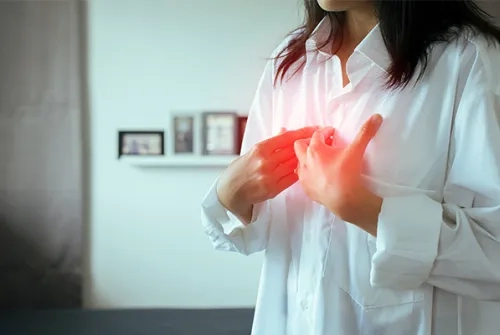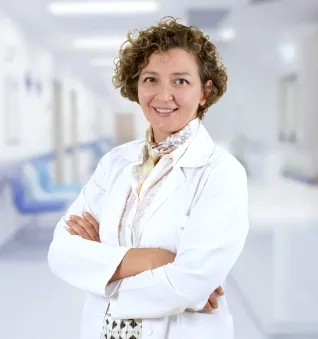Alo Yeditepe
Alo Yeditepe
Hepatitis Disease Poses Risk for Esophageal Varices
Varicose veins, which are defined as the enlargement and thickening of the veins and are seen more often in the legs, can be seen in other areas of the body, even in the esophagus. Stating that varicose veins in the esophagus are seen especially in the lower part of the esophagus, Gastroenterology Specialist Prof. Dr. Meltem Ergün stated that cirrhosis patients are at risk for esophageal varices.
Although most of us know varicose veins as formations in the legs, varicose veins can also occur in the esophagus, mostly due to liver reasons. Noting that esophageal varices will not be seen in people with a healthy liver, Yeditepe University Kozyatağı Hospital Gastroenterology Specialist Prof. Dr. Meltem Ergün provided the following information about the risk factors that cause the disease: "Varicose veins may form due to thickening and enlargement of the veins due to long-term diseases of the liver, especially cirrhosis. Apart from cirrhosis, those with long-term chronic hepatitis B and hepatitis C are also at risk. The person cannot feel the presence of varicose veins in the esophagus. The varicose veins show no signs of bleeding but can be detected endoscopically."
Varicose Vein Bleeds Can Threaten Life!
Indicating that very severe bleeding in esophageal varices, which show signs of bloody vomiting from the mouth, can be life-threatening, Prof. Dr. Meltem Ergün continued as follows: "As a physician, we aim to detect and take precautions without bleeding. However, if the patient applies to the physician with the complaint of bleeding, endoscopic treatment should be started as soon as possible so that the patient does not reach a life-threatening level. In patients with cirrhosis, varicose veins should be monitored endoscopically at regular intervals against the risk of bleeding. Drug treatment is also started to prevent growth in patients with varicose veins. Although drug treatment can be applied in patients who have not experienced any bleeding, the approach varies in patients with bleeding. In this case, treatments such as endoscopic taping of the varicose veins or closing them with occlusive treatment are on the agenda."
Endoscopy Gold Standard for Diagnosis
Stating that the endoscopic method is the gold standard for diagnosing esophageal varices, Prof. Dr. Meltem Ergün emphasized that symptoms are not usually confused with different diseases and said, "Since the problem is limited to the esophagus, it is not associated with different digestive system problems. If the patient with cirrhosis vomits blood, the underlying problem is likely the esophageal varices. Like the diagnosis of the problem, its treatment is performed by endoscopic method."
It Does Not Cause Cancer
Stating that esophageal varices will not cause cancer, but severe bleeding can be life-threatening even on their own, Yeditepe University Hospitals Gastroenterology Specialist Prof. Dr. Meltem Ergün continued as follows: "In general, cirrhotic patients should avoid salt as the accompanying acid (i.e., fluid accumulation in the abdomen) can be seen. If they have hepatitis, they are advised to use their medication regularly. In patients with varicose veins, it is also appropriate to use beta-blocker group drugs that reduce the pressure inside the varicose veins. If other complications such as varicose veins or acid have developed due to cirrhosis, the patient is actually a liver transplant candidate. It is beneficial to have a record in a transplant center and to have your name on the transplant list. When the donor is found, the definitive treatment for these patients is liver transplantation."
Press Coverage: haberler.com | cnnturk.com | hurriyet.com | oncevatan.com | sabah.com | gazetevatan.com
About
Faculty and Year of Graduation:
İstanbul University School of Medicine, 1995
”
See Also
- What is Constipation? What Helps With Constipation?
- What is Hepatitis B? What are its symptoms? How is it Transmitted?
- How to Cleanse the Liver the Fastest?
- Who Gets Colon Cancer?
- What is Colostrum? What are the Benefits of Colostrum Milk?
- Stomach Cancer Causes, Symptoms and Treatment
- What is Colon (Intestinal) Cancer? Symptoms and Treatment
- What Causes Nausea? What is Good for Nausea?
- What is Heartburn? What is Good for Heartburn?
- What is Fatty Liver?
- What is Good for Diarrhea? How to Treat Diarrhea?
- What is a Probiotic? What Are Its Benefits?
- What Is Reflux?
- What are the Nutrients That Stress Digestion?
- What are Capsule Treatment Methods in Stomach, Small, and Large Intestine Screening?
- Gastroenterology Procedures
- Pay Attention When Consuming These Nutrients!
- Mediterranean Diet Prevents Developing Colon Cancer!
- Breakthrough Innovations in Colon Cancer
- Diarrhea and Constipation Increased in Those with Irritable Stomach
- Anemia, Constipation, and Vomiting of Unknown Cause Can Be Dangerous
- Ramadan Warning for Those Who Experience Stomach Disorders
- Causes and Treatment of Abdominal Bloating
- The Giant Stones In The Biliary Tract Of 71-Year-Old Patient Were Removed Without Surgery
- How Is Stomach Infection Transmitted?
- What is Gastroesophageal Reflux Disease?
- Capsule Endoscopy
- Stretta / Endoscopic Reflux Treatment
- Fundoplication Method / Endoscopic Reflux Treatment
- Throat Reflux
- Techniques and Applications Used in Gastroenterology
- Irritable Bowel Syndrome (IBS)
- How to Swallow the Drug?
Alo Yeditepe




